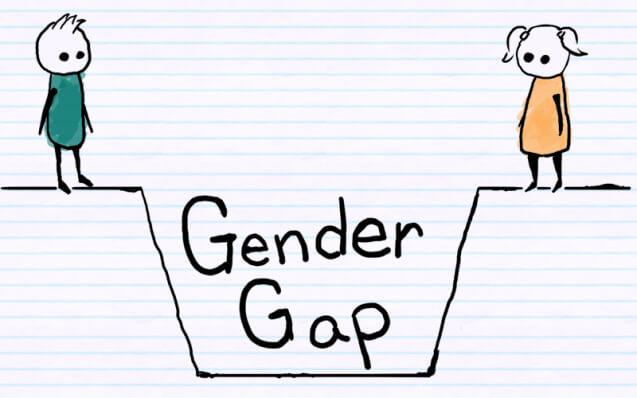- This topic has 1 reply, 2 voices, and was last updated 3 years, 6 months ago by
Chisom Oguh.
-
AuthorPosts
-
-
October 25, 2021 at 2:33 am #8505
Anastasia Romanova
ParticipantSince I am working at the Student Service Center (SSC) rather than in a classroom, it is challenging to notice any gender “regimes” that may exist in this environment. I have certainly noticed that the male-identifying students at the Student Service Center are a lot louder and more chaotic than the female-identifying students; I am not sure what that could imply about the role of gender at Northfield High School or the Northfield community in general. I can speculate, however, that, in accordance with Gilligan’s framework of moral development, the female-identifying students are trying to fit into the role of a “good girl” and be liked by other people (i.e. authority figures and the students around them) and, therefore, they may avoid causing any interruptions or distractions. By doing their work quietly, the female-identifying students may also be benefitting themselves (as Gilligan’s Stage 3 requires) because they may end up being more productive and getting more work done, while also being “good” in the eyes of others. Additionally, female-identifying students tend to ask me for help much more frequently compared to the male-identifying students. I think this observation circles back to our in-class discussion on the importance of being surrounded by or having access to educators that look like you, or are like you. It is more difficult to expose your vulnerability to (or even just approach) someone who seems to be drastically different from you out of the fear of not being understood or accepted. I have been assigned to work with male-identifying students as well, and while they do act fairly reserved at first, they eventually drop their guard and talk me through their issues with the assignment.
Another valuable observation from SSC is that the female-identifying students and the male-identifying students tend to sit separately; there is some sort of a gender divide going on at the tutoring center. As far as I understand, this may be due to pre-existing friend groups (i.e. the divide is not gender-based but rather friend group-based). However, even that suggests that friend groups at the Northfield High School tend to be fairly homogenous in terms of gender, which may be negatively impacting the socialization process of the students. The students seem to be neither resisting nor embracing the gender-informed divides or behaviors. It is simply taken as the norm, and no one puts any effort into mixing it up.

My final interesting observation is that female-identifying students typically request help with their math or science assignments, while male-identifying students usually need help with humanities (i.e. English, history, etc.). I can’t help but wonder if this phenomenon has to with the societal expectation that each gender has a specific way their brain is “wired” to function. In other words, it is a common belief that “boys” are more logical; they have an easier time understanding things that have to do with algorithms and numbers. Girls, on the other hand, are commonly associated with disciplines that do not require that kind of orderly logic (i.e. humanities). Therefore, I wonder if this expectation makes the female-identifying students feel like they do not have a shot at being good at math and such, and they end up not trying as hard in those classes as male-identifying students would. This is a very speculative conclusion, but it is certainly a pattern I have noticed.

In my experience, that expectation most definitely was prominent in my education. Throughout middle school, when I still lived in Ukraine, being a female significantly impacted my educational experience. In Ukraine, gender stereotypes are even more pronounced in the US, and no one tries to work against them, like they often do here. In school, gender stereotypes manifest themselves in a variety of ways. First, I felt a lot more comfortable in humanities classes, than I would in math or science. In Ukraine, girls are not supposed to think “logically”, which is what science and math require. Girls are supposed to feel, care for others, and express themselves well through writing and speaking. Hence, I never tried hard in classes like chemistry, biology, algebra, or geometry because I knew that, as a girl, I was not expected to excel in them. Instead, I spent most of my time on Russian language and literature, English, health science, history, etc. I believe that affected my educational and professional trajectory in life. Since I never acquired much knowledge or skill of hard sciences and math, I have a hard time making sense of it now and I actively avoid most things that involve numbers and algorithms. Who knows, maybe if gender expectations were not present in my early educational experiences, I would be a math genius or a computer science guru. Secondly, misbehaving produced very different consequences for boys than it did for girls. The teachers would oftentimes just assume that girls meant no harm, and therefore should be punished for a wrongdoing. Boys, however, were often seen by teachers as a kind of tricksters, who needed to be disciplined through various punishments and insults. The boys who misbehaved the most tended to be a lot less motivated and would only misbehave more in response to punishments. I am not sure how such difference affected me personally, but I suspect that for those boys it may have had detrimental effects on their self-esteem.

* this is just a photo of a very typical ukrainian classroom
-
This topic was modified 3 years, 6 months ago by
Anastasia Romanova.
-
This topic was modified 3 years, 6 months ago by
Anastasia Romanova.
-
This topic was modified 3 years, 6 months ago by
-
October 25, 2021 at 4:04 am #8518
Chisom Oguh
ParticipantAnastasia, I have also noticed the separation of genders in my class as well. There is that one group that has a mix, but usually, there are male-identifying students who work in pairs together while the female-identifying students would work together in pairs themselves. I like your observation on how even though it may not seem gender-based, friend groups that are formed could be impacted by the gender identity of the students in those friend groups. Using this information, how could a teacher change up a classroom to encourage conversations between different genders without it seeming forced to their students? In my class, the teacher has assigned seats and at each table (which can hold 2 students), there is a boy/girl pair. But when it’s time to work on their worksheets, the students move to their friends who are likely to be of the same gender.
-
-
AuthorPosts
- You must be logged in to reply to this topic.
